

...or to Infrared Photography
|
Infrared Photography with Olympus C-5060WZ |

|

|
Back to Olympus C-5060/7070WZ...
...or to Infrared Photography |
|
The infrared response of the C-5060WZ is more or less the same as that of the '5050 — usable if not really sensitive to long wavelengths, capable of pleasing results with the Woods effect quite well-pronounced. Here are some examples. | ||
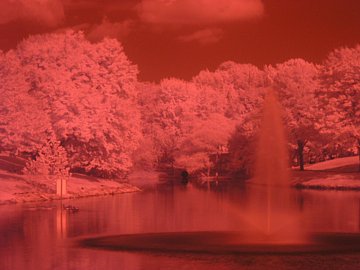
|
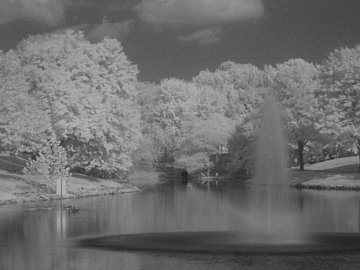
| |
| [24] C-5060WZ, Hoya R72, EFL = 110 mm, programmed exposure with no compensation, 1s at F/4.8, 250 ISO | [25] The same image after desaturation... | |
|
The lake at the front of my house is a nice IR subject, so here it is, on a late, August afternoon. The original image shot with the Hoya R72 filter is shown above at left; above right is the same file after desaturation, and at the right — after some histogram adjustment.
The R72 exposure adjustment factor for the '5060, i.e., the exposure difference between this picture and the one below, is 2400, or 11.2 EV (the same as for the '5050). Note that the exposure program in this camers boosts up the CCD gain quite aggresively: ISO 250 in this case. This does not help the noise, usually prominent in infrared, but I don't mind it really. |
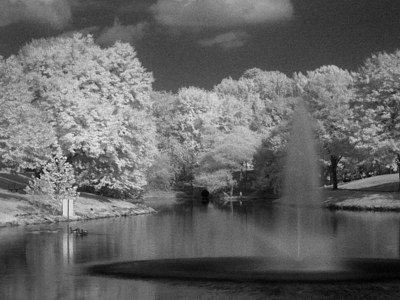
| |
| [26] ...and the final version, after tonal adjustment. The same image in XGA size can be found here. | ||
|
Compare that with a straight shot of the same scene just a few seconds earlier, color and monochrome, shown below. Both are quite flat and trivial in comparison. | ||
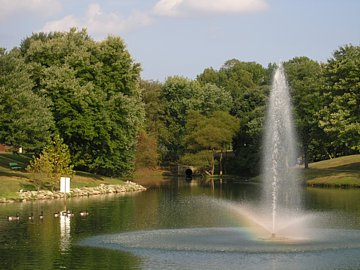
|
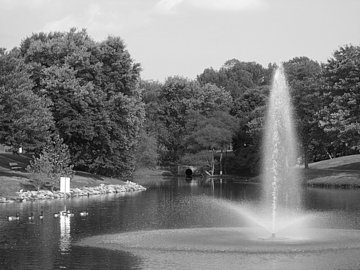
| |
| [27] C-5060WZ, no filter, EFL = 110 mm, programmed with no compensation, 1/250s at F/5.6, ISO 80 | [28] The same image desaturated and slightly re-equalized. | |
|
Two more examples from this camera; this time just the final version. These are vacation pictures from the Sierra Nevadas, September 2004. XGA-sized versions can be found at my IR Gallery page. | ||
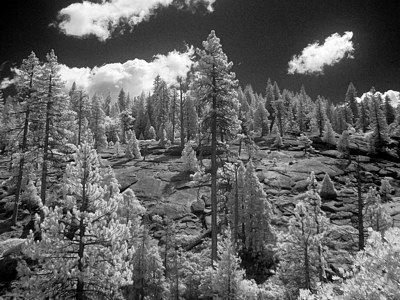
|
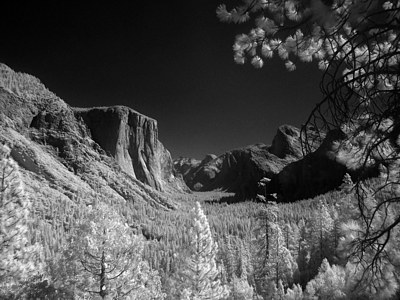
| |
| [29] C-5060WZ, Hoya R72, EFL = 27 mm, program exposure at -0.7 EV: 1.3s at F/2.8, ISO 137 (no kidding!) | [30] C-5060WZ, Hoya R72, EFL = 27 mm, aperture priority at -0.3 EV: 4s at F/5.6, ISO 80 | |
|
Your infrared images do not have to be monochromatic (like black/white or sepia). There is some color information in the image file, and while it has nothing to do with reality, it may be used to generate quite pleasing images. The easiest way to do that is to split your image into individual RGB components, adjust each separately, and then recombine them. Below left I took image [24] and split it into R, G, and B components in postprocessing. Then I stretched the histograms individually, especially in green, applying also some smart blur (denoising) in green and more in the blue channel. After combining the layers back into a composite image, I additionally reduced the color saturation of the red layer. Below right I did basically the same, but additionally swapped the red and blue chanels. | ||
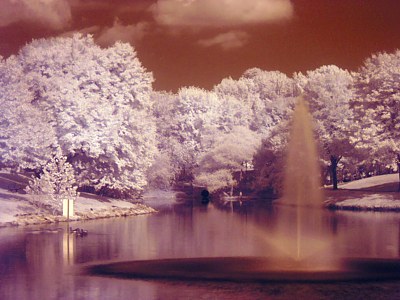
|
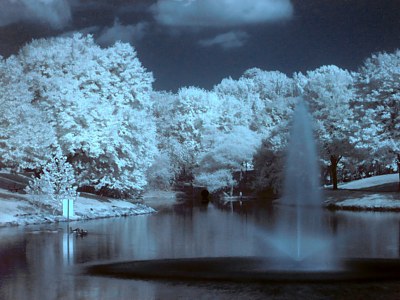
| |
| [31] Image [24] after color layer manipulation. Click here for XGA size. | [32] Similar to [31] but after swapping the R and B channels. Click here to see it in XGA size. | |
|
The almost-but-not-quite-monochrome tonality of images turned out quite pleasing, with the extra benefit of less noise in the sky, as compared to the b&w version, as you may check by inspecting the XGA files. (I like [31] more than [32], but this is a matter of taste.) While the purists among us will stick to the black-and-white (least manipulation in postprocessing), some may find the color channel game interesting or entertaining. | ||
|
Check also The Beauty of Infrared page in my Gallery section. | ||

|

|
Back to Olympus C-5060/7070WZ...
...or to Infrared Photography |
| Home: wrotniak.net | Search this site | Change font size |
| Posted 2004/05/12; last updated 2008/03/16 | Copyright © 2004-2008 by J. Andrzej Wrotniak |